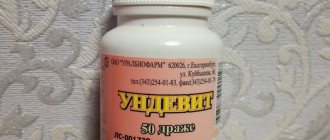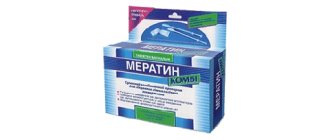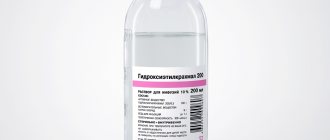Blood is the most important fluid in the body. Any interventions or diseases that lead to a decrease in its quantity or deterioration in its composition are extremely dangerous to human health and life. Therefore, medicine has developed ways to maintain optimal blood composition and the required amount in the body. One of the drugs needed for diseases of the hematopoietic systems is “Cryoprecipitate”. The article discusses its composition, instructions for use, dosage, conditions of preparation and storage, as well as its effect on the human body.
Release form and composition
- lyophilisate for the preparation of solution for infusion: porous dry mass from pale yellow to white, odorless; after diluting the drug in water for injection in an amount of 50 ml at a temperature of 36 ± 1 ° C, an opalescent transparent liquid of pale yellow color is formed [200 action units (IU) of factor VIII in a glass bottle for blood, infusion and transfusion preparations of 250 ml, hermetically sealed with a rubber stopper, rolled with an aluminum cap and filled with Unna paste; 1 bottle in a cardboard box or 28 bottles in a cardboard box with gaskets and bars];
- solution for infusion (frozen): when frozen – a hardened dense mass of pale yellow or yellow color; after thawing and complete dissolution (at a temperature of 35–37 °C for no more than 7 minutes in a water bath) - a clear or slightly opalescent (depending on the manufacturer) solution of a pale yellow color, free of flakes [1 dose (100 units) /15±5 ml) in a plastic bag from a container for collecting donor blood (compoplast) of domestic production with a volume of 300 ml or in a polymer container with a volume of 300 ml. There is 1 container in a thermal container or 10 containers in a box].
The drug comes with instructions for using Cryoprecipitate.
1 bottle of lyophilisate for preparing a solution for infusion contains at least 200 units of blood coagulation factor VIII with the addition of a glucose stabilizer.
1 plastic bag or polymer container with a solution for infusion (frozen) contains at least 100 units of blood clotting factor VIII (15±5 ml - 1 dose).
Labeling and storage
The following information must be on the packaging of “Cryoprecipitate” or in the accompanying annotation:
- component name;
- the drug belongs to the AB0 system;
- indication of affiliation according to the Rh factor system;
- manufacturer information;
- date of manufacture;
- terms of use;
- instructions for use and storage of the drug.
The duration of storage of “Cryoprecipitate” depends on the temperature. The maximum permissible period is three years. The drug can be stored for two years at a temperature not exceeding -25 °C. At minus 18-25 °C the period is from three to six months.
Pharmacological properties
Pharmacodynamics
Cryoprecipitate is a protein preparation of isogenic human blood plasma, which primarily contains blood coagulation factor VIII. The drug also contains fibrinogen and a minor admixture of other proteins, including fibrin-stabilizing factor (factor XIII).
The drug demonstrates a hemostatic effect against the background of increased bleeding caused by a weakening of the activity of fibrin-stabilizing factor, von Willebrand factor and antihemophilic globulin (factor VIII).
Composition of the drug
Essentially, “Cryoprecipitate” is a blood plasma preparation containing the components necessary for its clotting - coagulation. The main active ingredients are human blood clotting factor VIII (factor VIII) and fibrinogens - blood plasma proteins. A lack of these components in the body leads to a deterioration in clotting capabilities and, as a consequence, bleeding and disruption of organ function caused by it.
After receiving the plasma preparation from the donor, it is frozen and then centrifuged - the process of isolating the necessary components in the composition. Next, the resulting liquid is frozen again.
Cryoprecipitate, instructions for use: method and dosage
Infusion of the Cryoprecipitate solution is carried out taking into account the compatibility of blood groups of the A0 system.
Before administration, the lyophilisate for preparing a solution for infusion should be dissolved in 50 ml of water for injection at a temperature of 35–37 °C. The bag with the frozen infusion solution must be placed in a water bath at a temperature of 35–37 °C for thawing. Both dosage forms of Cryoprecipitate dissolve completely at the specified temperature within 7 minutes. The resulting clear, pale yellow solution, free of flakes, should be used immediately.
Cryoprecipitate must be administered intravenously (IV) in a slow stream using a syringe or a system for transfusion of infusion solutions with a disposable filter. The dose of Cryoprecipitate is determined depending on the location and nature of the bleeding, the initial level of factor VIII in the blood, the presence of a specific inhibitor in the blood that can significantly weaken the activity of factor VIII, as well as the degree of risk of surgical intervention. The dose of the drug is expressed in units of factor VIII activity.
In case of hemarthrosis, kidney, nose, gingival bleeding, and other frequent complications of hemophilia, as well as during tooth extraction, in order to ensure normal hemostasis, the plasma level of factor VIII should be at least 20% of activity, in case of gastrointestinal bleeding, intermuscular hematomas, injuries, fractures - at least 40%, for the vast majority of surgical interventions - at least 70%.
The number of doses of Cryoprecipitate required to increase the concentration of factor VIII in the blood to the required level is established taking into account the fact that when injecting the drug in an amount of 1 IU per 1 kg of body weight, the level of factor VIII in the blood increases by approximately 1% according to the formula:
X = (Y × Z) ÷ 100
where X is the dose of Cryoprecipitate, Y is body weight in kg, Z is the required level of factor VIII in the blood, 100 is the lowest content of factor VIII (in units of activity) in 1 dose.
After complete relief of bleeding in patients with hemophilia, the solution is administered at intervals of 12–24 hours in a dose that allows for an increase in the concentration of factor VIII by at least 20% of activity. This therapy is carried out for several days until the inflammatory changes are completely eliminated or until the hematoma visually decreases in size.
In case of surgical interventions, a hemostatic dose of the solution is recommended to be administered 30 minutes before the start of the operation. Against the background of massive bleeding, blood loss is replaced; at the end of the operation, the drug solution is reintroduced in a dose corresponding to ½ the original one. After the operation, it is necessary to maintain the level of factor VIII within the same limits for 3–5 days as during the operation. In the subsequent postoperative period, to maintain hemostasis, it is sufficient to increase the level of factor VIII to 20% activity. The course of hemostatic therapy, as a rule, lasts 7–14 days and depends on the location of the bleeding, the nature of the surgical intervention, and the reparative characteristics of the tissue.
Impact on the body
What happens to the body during a transfusion of “Cryoprecipitate”?
The administered drug improves blood coagulation due to its saturation with fibrinogen and an increase in factor VIII. Thus, bleeding stops after the transfusion. This is a necessary measure for injuries, severe hematomas and diseases that cause blood loss.
During surgical intervention in the body, “Cryoprecipitate” is administered half an hour before the operation and then several more times over the course of one to two weeks. The duration of treatment depends on the severity of the bleeding and the general ability of the tissue to recover.
Side effects
During the period of administration of Cryoprecipitate, in some cases paresthesia of the oral mucosa was recorded, which did not require treatment and went away on its own immediately after completion of the transfusion.
If there is a history of reactions to transfusions of blood components, the use of the drug can sometimes lead to the following undesirable effects: allergic reactions - rash, urticaria, wheezing, a feeling of constriction in the chest, decreased blood pressure (BP), anaphylaxis; increased body temperature and slight chills (can be eliminated by administering antihistamines and calcium supplements); formation of antibodies to blood clotting factor VIII.
special instructions
Cryoprecipitate is produced from human blood plasma, and therefore, when administering the drug, there is a risk of infection with hepatitis and other viruses. All diseases identified by a doctor, the source of which could presumably be caused by this drug, must be reported to its manufacturer.
It is recommended to monitor heart rate (HR) before and during the administration of Cryoprecipitate. If a significant increase in heart rate is detected, the infusion rate should be reduced or the administration of the solution should be suspended/stopped, which usually allows these symptoms to be quickly relieved.
During drug therapy, to monitor the achievement and maintenance of the appropriate concentration of antihemophilic factor (AHF), laboratory tests of the patient's plasma should be carried out at certain intervals. If the required plasma level of AGP is not achieved or bleeding cannot be controlled with an adequate dose, the possibility of the presence of inhibitors, detected quantitatively in neutralized antihemophilic units in the total volume of plasma or in each ml of plasma, should be considered. When the inhibitor content does not exceed 10 U/ml, if a sufficient dose of AGF is used to neutralize the inhibitor, an additional amount of AGF can be administered.
When treating hemophilia with Cryoprecipitate, it is advisable to combine it with glucocorticosteroid drugs and antifibrinolytics in preventive and medium therapeutic doses.
With the use of Cryoprecipitate, the risk of developing thromboembolism, thrombosis, disseminated intravascular coagulation syndrome (DIC), and myocardial infarction increases significantly.
What else is important to know when treating with “Cryoprecipitate”
Contraindications for use: high individual intolerance.
Cryoprecipitate is a drug that can be prescribed to pregnant and breastfeeding women, provided that the health benefits outweigh the possible risk to the baby.
The blood plasma from which Cryoprecipitate is obtained is usually tested for the possibility of transmitting infections, for example, HIV, hepatitis and others. However, there is a risk of infection of the recipient through drug transfusion.
A possible consequence of the use of “Cryoprecipitate” is the development of thrombosis and myocardial infarction.
During the patient's treatment with the drug, regular plasma examinations should be carried out to ensure the adequacy of treatment and the presence of positive dynamics. If treatment does not bring the expected results, it is worth conducting a test for the presence of antibodies that interfere with the absorption of the drug in the blood plasma. If antibody tests give negative results, then it would be advisable to increase the dose of the drug.
“Cryoprecipitate” should not be used in treatment unless there is a proven deficiency in the body of the factors contained in this drug.
Reviews of Cryoprecipitate
According to the few reviews of Cryoprecipitate found on medical websites, it is a fairly effective remedy used for the treatment and prevention of bleeding in patients suffering from hemophilia, von Willebrand disease, or bleeding of another etiology with a sharp decrease in the plasma level of factor VIII. Experts note that Cryoprecipitate infusions are extremely rarely complicated by any undesirable effects. Some patients indicate a burning sensation in the oral mucosa, which goes away after the solution is administered and does not require treatment.
Indications for use
"Cryoprecipitate" is a medicine prescribed for the following indications:
- hemophilia A (a disease characterized by incoagulability of blood);
- von Willebrand disease (episodic spontaneous bleeding);
- intravascular coagulation;
- general fibrinogen deficiency;
- afibrinogenemia (lack of fibrinogen in the body);
- uremia (autointoxication);
- factor XIII deficiency;
- surgical interventions (surgeries, tooth extraction, etc.).
The above situations contribute to a decrease in blood clotting or a lack of its components in the body. Therefore, “Plasma Cryoprecipitate” is prescribed as a treatment in these cases.
In addition, the drug is used to make fibrin glue, which is used in surgical operations.







